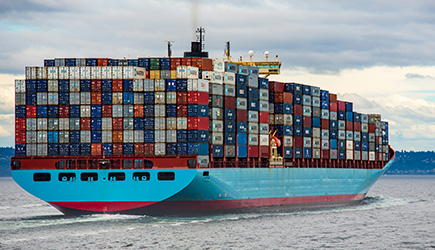
Electromobility in shipping - on the way to a green future?
The fight against climate change requires a rethink in many areas: emissions must be reduced in order to achieve climate targets. The shipping industry is also facing major challenges in this regard. The shipping industry produces around one billion tons of CO2 every year - that is 2.5 percent of global greenhouse gas emissions. According to a study by the EU Parliament, shipping could account for almost a fifth of global CO2 emissions by 2050. However, CO2 emissions are not the only problem; ships also emit other exhaust gases, including sulphur oxides, nitrogen oxides, soot particles and particulate matter.
To counteract these developments, the members of the International Maritime Organization (IMO) set themselves the goal of halving emissions by 2050 back in 2018. In July 2023, the plan was tightened up again and a reduction in emissions towards zero was even pushed forward. Ideas and approaches as to how this can be achieved depend not least on the technical possibilities and infrastructure.
Electrification in shipping: what are the challenges?
There have long been various intermediate stages on the way from combustion engines to emission-free propulsion in the shipping industry. Many ships are already partially electric or hybrid. Part-electric means that diesel generators produce the electricity, which in turn drives an electric motor that moves the ship's propeller. This saves fuel and requires fewer components. However, the ship still does not sail without a running diesel engine. With hybrid propulsion, there are additional batteries on board and the ship can sail purely electrically, at least for a certain period of time.
However, in order to achieve the IMO targets in the short time available, more clean and efficient energy sources such as liquefied natural gas (LNG), hydrogen or electrical energy are needed. Until now, all-electric technology has mainly been reserved for ferries or excursion boats, which primarily cover short distances. The longer the distance and the larger the ship, the more complicated the path to all-electric propulsion. The batteries would have to become more efficient and lighter and be located directly on board. The charging infrastructure - especially at large ports - must also be expanded worldwide for e-mobility.
Leading by example
Scandinavia is leading the way in Europe: The “Vision of the Fjords”, the first hybrid passenger ship built for tours through the Norwegian fjords, has been sailing in Norway since 2016. Its sister ship, “Future of the Fjords”, became the world's first fully electric, zero-emission passenger ship two years later. The batteries are charged on board using surplus energy from the diesel engine or directly in port, allowing the ships to run on battery power. The world's first electric car ferry, the “Ampere”, also sails in Norway - and has been doing so since 2015.
When it comes to cargo shipping, however, China has made groundbreaking progress in environmentally friendly transportation: It was put into operation as early as last summer and Cosco Shipping's first fully electric container ship has been in regular service since this year. It runs on a container battery concept and has replaceable batteries that can be recharged in port. The ship, named Green Water 01, has a length of 120 meters and can transport approx. 10,000 tons of cargo. The cargo capacity is 700 TEU (1 TEU corresponds to a 20-foot standard container). The ship is currently only operating nationally, along China's longest river, the Yangtze, and has a total route of 965 kilometers. In the long term, it is intended to serve as a model for environmentally friendly shipping projects.
Sources: infineon.com, Juli 2021
meenergy.earth, L. Plettner, 07.11.2023
electrive.net, Sebastian Schaal, 02.05.2024
thefjords.no
Photo: Ian Taylor on Unsplash













